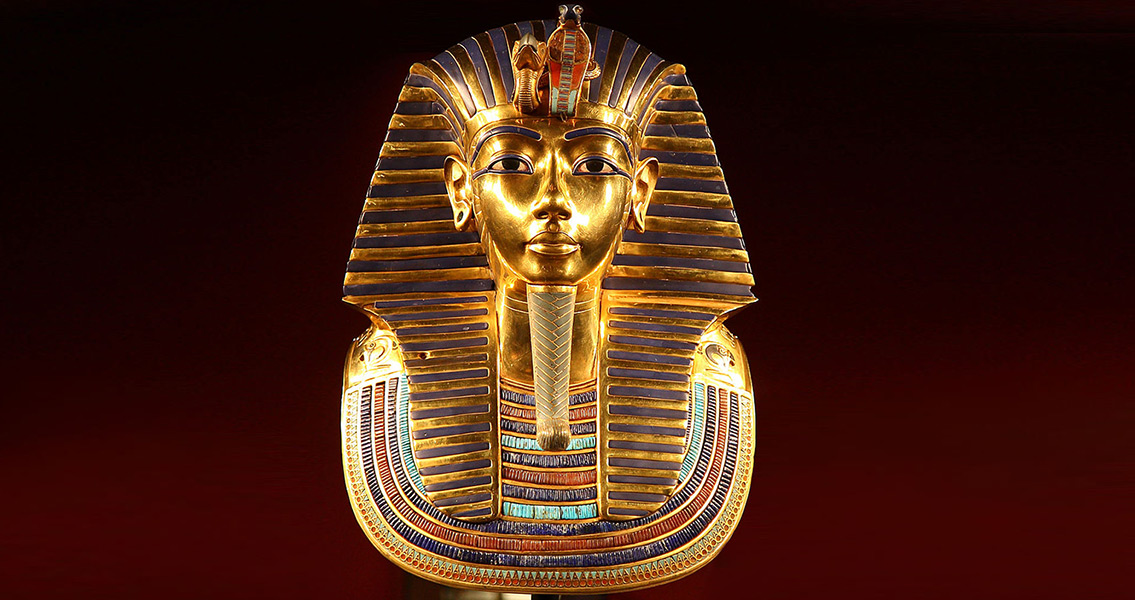<![CDATA[Archaeologist Nicholas Reeves has made headlines once more, following his suggestion that the tomb of Tutankhamun was initially built for his stepmother Nefertiti, by claiming that the gold mask of the boy-king was also made for Akhenaten’s wife. Reeves told Egyptian news website Ahram that he has had the chance to look at the mask in more detail over the last few years, after it was remounted at the Egyptian Museum. Being able to see both the front and the back of the mask, he noticed that the facial features at the two ends did not match, he said at a press conference in Heliopolis. Reeves went on to explain that the mismatch was because the two sides of the mask had been made independently of each other. Although initially he thought it was just “a technical feature”, he later noticed that the kind of gold used on the front and on the back also differed, as did the material used for the blue elements in the mask: the eyes are made from lapis lazuli, while the blue stripes are made from blue glass. Perhaps more important, however, was Reeve’s discovery of holes in the earlobes of the mask, covered in thin gold foil discs. The archaeologist did some digging into historical records and previous studies, and found no evidence of Egyptian kings ever having worn earrings, unlike queens. He added that there was evidence of old piercing in Tutankhamun’s earlobes, which suggested he had worn earrings as a small child but not as a king. Reeves also told Ahram that after he'd examined the mask, he realised the inscription on Tutankhamun’s cartouche had been changed, suggesting the tomb in which he was buried was meant for his stepmother. Reeves took the world of science by storm two months ago when he said scans of Tutankhamun’s tomb had revealed two secret doors leading to what could be other burial chambers. He then explained that it was possible one of these chambers belonged to Nefertiti, wife of religious reformer Akhenaten and very likely ruler of Egypt after his death. In support of his hypothesis, Reeves noted the treasures found in the boy-king’s burial chamber – treasure that was too rich compared to the scarcity of artefacts in the rest of the tomb. This led the University of Arizona researcher to suggest that Tutankhamun had died suddenly, leaving no time to prepare a proper tomb and furnishings, so the priests had to improvise by adding another chamber in Nefertiti’s tomb. Reeves backed his hypothesis by pointing out that other egyptologists have established that a lot of the artefacts in Tutankhamun’s chamber were meant for the co-regent of his father – this co-regent is widely believed to have been Nefertiti. At the moment, the Egyptian antiquities authorities are conducting further scans in Tutankhamun’s tomb using thermal and radar imaging methods. According to Antiquities Minister Mamdouh Eldamati, as quoted by Ahram, even if the scans reveal hidden burial chambers it will be a while before their occupant or occupants are identified, adding that before any digging starts for these hidden chambers, measures must be taken to preserve Tutankhamun’s chamber. The minister seems to be much more cautious with speculation as to who might be in those hidden chambers, telling media that although the discovery of Nefertiti’s body would be a sensation, he doubts it is her that is buried in Tutankhamun’s tomb. Image courtesy of Wikimedia Commons user: Ibrahim.ID]]>
Tutankhamun’s Mask May Have Been Nefertiti’s Initially
